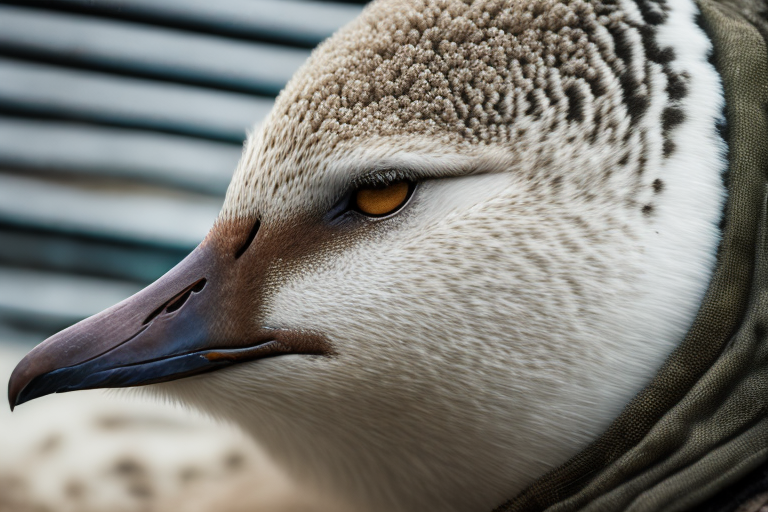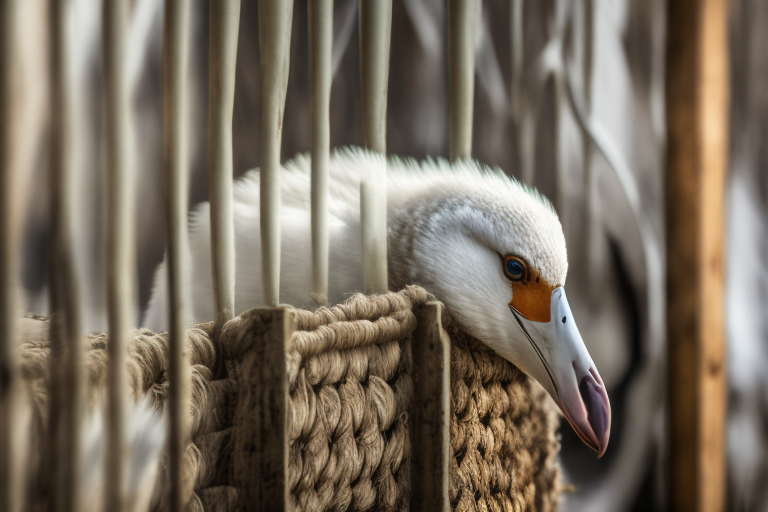Goose down comforters are treasured for their unmatched warmth, loftiness, and durability. But the down insulation inside these bedding products comes from geese—raising important ethical questions around animal welfare and humane sourcing.
This beginner’s guide tackles the controversy head on. You’ll learn:
- Key facts about goose down and how it’s harvested
- The main animal cruelty concerns around down production
- Efforts by brands to improve industry standards
- How to shop mindfully for responsibly-sourced down
Understanding these issues is key to making educated choices as a consumer. Let’s dive in.
What Is Goose Down and Why Is It Used?
Goose down refers to the fine, fluffy cluster of fibers found underneath the exterior feathers of ducks and geese. This soft undercoating serves as a warm, protective layer for waterfowl.
For bedding, down insulation offers an exceptional warmth-to-weight ratio. The tiny fibers trap air, acting as a natural insulation that keeps heat close to the body.
Down is also highly compressible. It springs back into shape and loft when compression is removed. This makes it perfect for stuffing into duvets, pillows, jackets, and more.
The outstanding qualities of goose down have made it the preferred fill material for luxury bedding and apparel for decades. But a dark side lies beneath the fluff.
The Controversy: Unethical Sourcing Practices
Most of the world’s down comes from China and countries in Eastern Europe. Lax animal welfare laws in these regions have enabled controversial practices that maximize down yields at the expense of geese.
The two main concerns around sourcing are:
- Live-plucking – Painfully ripping feathers and down from the bodies of live geese
- Force-feeding – Overfeeding geese to fatten their livers for foie gras production. This also increases down yields.
These cruel methods cause immense suffering. But tracerbility issues make it impossible for brands to monitor all stages of their complex global supply chain.
The Disturbing Realities of Live-Plucking
Live-plucking is exactly what it sounds like: pulling out handfuls of feathers and down from fully conscious, living geese.
When new feathers grow, they are immediately plucked again in painful cycles. Feather follicles and skin tissue get damaged in the process.
- “Bloody wounds”… “exposed flesh”… “animal shriek”
- Can persist for weeks before geese are slaughtered
- Banned in the EU but reports of black market live-plucking continue
The practice maximizes down harvested per goose over its lifetime. But horrifying cruelty is the cost.
Connections With the Foie Gras Industry
Up to 80% of the world’s down comes from China and countries supplying geese for foie gras production.
Foie gras is a luxury food made from the grossly enlarged livers of force-fed geese. Farmers use metal pipes to relentlessly funnel enormous amounts of corn mash into their bodies multiple times per day.
This force-feeding serves two purposes:
- Fatten goose livers for foie gras meat
- Stimulate preening to regrow more down feathers
In other words, the geese down inside your pillow may be a byproduct of this barbaric practice.
Industry Efforts to Ensure Ethical Sourcing
Thankfully, consumer awareness and pressure are driving change for the better.
Since 2015, over 150 brands have adopted the Responsible Down Standard (RDS) across the textile industry. RDS certifies that down and feathers come from cruelty-free sources.
The respected Textile Exchange nonprofit provides third-party verification that strict animal welfare criteria are met. These include:
- No live-plucking or force-feeding of birds
- Freedom from thirst, hunger, discomfort
- Humane on-farm handling and transport
- Third-party audits of every stage from farm to product
Top leaders like Patagonia and The North Face have committed to using 100% RDS-certified down across product lines. And H&M has set high ambitions to source only ethical down by 2025.
But the standard isn’t perfect…
Limitations of the Responsible Down Standard
While pioneering for improved welfare standards, RDS has received criticisms including:
- Lack of unannounced farm audits to prevent temporary changes by farmers
- Insufficient country-level risk assessments to determine where auditing should be stricter
- Need for even stronger slaughter standards and measurable outcome welfare data
In other words, the RDS audits offer guidelines for more ethical practices—but can’t fully guarantee the absence of cruelty at all stages for certified products.
Until supply chains offer complete traceability, concerns around sneakier inhumane treatment may persist. But avoiding down altogether brings up another set of pros and cons…
Should You Choose Down Alternative Comforters?

If animal welfare is a top priority, synthetic down alternatives do exist. These include microfiber blends made from polyester.
| Down Alternative Pros | Down Alternative Cons |
|---|---|
| Zero live geese harmed | Contribute to microplastic pollution from synthetic fibers |
| Usually cheaper than down | Lose loft and form clumps over time |
| Last longer if cared for | Not as warm or lightweight |
| Hypoallergenic options exist | Needs more filling to match real down performance |
While microplastics shed into waterways are clearly problematic, the scale is likely smaller than the immense suffering caused by the mass production of low-cost down bedding and apparel globally. It depends on your personal values.
Shopping More Ethically for Down Products
If you opt not to give up that cozy down jacket or duvet just yet, here are tips to shop with care:
- Look for RDS hang tags — signifying third-party audited animal welfare standards
- Check brand policies and commitments — read where and how they source down
- Support leaders advancing industry standards — with innovating traceability tech like Patagonia
- Buy used down goods — extends product lifetimes and avoids directly funding cruelty
- Choose higher-fill-power down — less birds needed for more warmth from premium clusters
- Commit to lower consumption — buy only what you truly need and make it last
Here are my top recommended down brands based on sourcing ethics:
| Brand | Rating | Price Range | Why I Recommend |
|---|---|---|---|
| Patagonia | 5/5 | $$$ | Industry leader – traces down to bird level |
| The North Face | 5/5 | $$ | 100% RDS-certified down across all products |
| Serta | 4/5 | $ | Major supplier using certified down blends |
Key Takeaways: Navigating the Down Debate
The bottom line? Source matters when it comes to the down inside luxury bedding and apparel items. Vote with your dollars to drive kinder, more ethical standards across the entire supply chain—from hatchery to finished product.
By supporting brands that demonstrate authentic care through robust animal welfare auditing and traceability innovations, consumers can inch the needle forward on ending the worst practices causing immense, needless suffering.
While a perfect solution doesn’t exist yet in such a complex, opaque global industry, progress driven by compassionate voices is steadily growing. You can help guide the way.
What about you – did this article change how you think about down products? Share your thoughts below!
Frequently Asked Questions
What exactly is live-plucking?
Live-plucking refers to painfully ripping out handfuls of feathers and down from fully conscious, living geese. When new feathers grow back, they are immediately plucked again in painful cycles. This causes bloody wounds but maximizes the amount of down harvested per goose.
Is all goose down connected to foie gras production?
Up to 80% of the world’s down comes as a byproduct from geese raised for foie gras production. Force-feeding geese to fatten their livers simultaneously causes more rapid feather regrowth, increasing down yields over the bird’s lifetime.
How can I check if my down comforter is responsibly sourced?
Look for hang tags from the Responsible Down Standard (RDS) to ensure your down comforter was not sourced from farms using controversial practices like live-plucking or force-feeding. Checking brand policies provides more details on their specific ethical sourcing commitments.
What are the best down alternative options?
High-quality down alternative comforters use microfiber fill blends made from polyester or other synthetic materials. While concerns around microplastics exist, the scale of environmental harm is likely reduced compared to the immense animal suffering caused by unethical mass production of luxury goose down items.
Who are the most ethical down brands?
Based on robust traceability and sourcing policies, I recommend Patagonia, The North Face, and Serta for ethically produced down comforters and apparel. All have made commitments to safeguarding goose welfare through third-party audits like the Responsible Down Standard (RDS).








